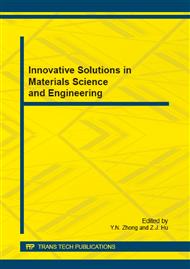p.344
p.350
p.356
p.360
p.365
p.369
p.373
p.377
p.382
Optimal Design of Composite Wing-Box by Genetic Algorithm
Abstract:
With the increasing use of composite materials in aviation structures, stability and weights of wing-box are important projects that engineers care about. In this paper, the genetic algorithm is chosen to deal with the conceptual design problems of composite wing-box. For the more excellent capabilities in optimization computation of multi-dimensional functions, particularly when overcoming local-best solutions, genetic algorithm is presented to determine the design variables of complicated wing-box. Optimization algorithm is realized with MATLAB software, which calls the finite element program MSC.Nastran to get buckling load factors, and structural layout, thickness of plies and minimum weight of wing-box are obtained simultaneously. The results show that the approach proposed is available, effective to preliminary design of the mainly aeronautical structures.
Info:
Periodical:
Pages:
365-368
Citation:
Online since:
November 2014
Authors:
Keywords:
Price:
Сopyright:
© 2015 Trans Tech Publications Ltd. All Rights Reserved
Share:
Citation:


